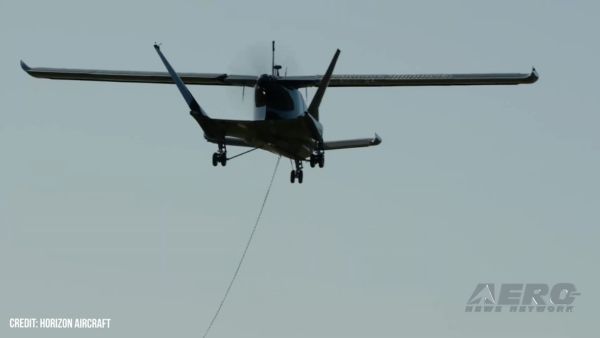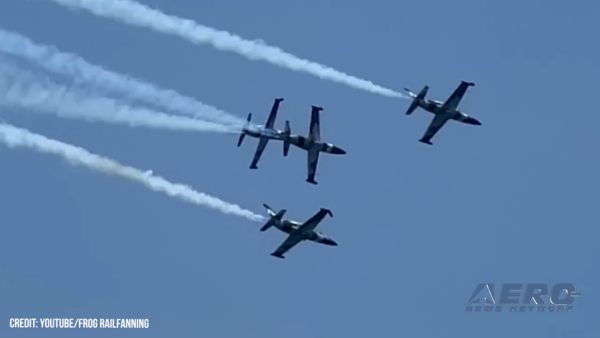Compelling Argument Presented in Letter to Congress
A number of like-minded aviation unions have sent a letter to leaders of the U.S. House of Representatives. The letter supports a proposed amendment to the pending FAA Reauthorization Bill. Subject amendment seeks to maintain 65-years as the compulsory retirement age for Part 121 pilots.

In a statement supplementing the letter’s contents, ALPA president Captain Jason Ambrosi set forth: “Maintaining the highest pilot training and qualification standards has been critical to establishing the U.S. as the global leader in aviation safety. ALPA applauds the [Congressional] leadership and tireless advocacy of Senators Schumer, Cantwell and Duckworth in the fight to hold the line against those who would lower the bar on pilot training. Unfortunately, there are now those who seek to introduce new risks into the aviation system, upend airline flight operations and increase ticket costs, while undermining the rights of American workers and their collective bargaining agreements. Raising the retirement age is not only a solution in search of a problem, it is a proposal that has not been thought out, studied or vetted by aviation safety experts – those upon whom we all rely to keep flying safe. Congress should reject this ill-conceived proposal.”
Endorsed by the Air Line Pilots Association; the Allied Pilots Association; the Association of Flight Attendants-CWA; the International Association of Machinists and Aerospace Workers; the International Brotherhood of Teamsters; the National Air Traffic Controllers Association; the Southwest Airlines Pilots Association; the Transportation Trades Department, AFL-CIO; the Transport Workers Unions of America; and UNITE HERE, the letter read:
“Dear Speaker McCarthy and Leader Jeffries,
“The undersigned labor organizations representing airline workers write to urge that you allow for a vote on the bipartisan Bergmann-Garcia amendment #7 to remove an imprudent change to the statutory pilot retirement age in the underlying bill. Raising the retirement age to no longer be in compliance with International Civil Aviation Organization will upend pilot bidding, expose pilot unions and airlines to significant legal liability, require hard fought for collective bargaining agreements to be reopened and reduce other unions’ ability to negotiate contracts, reduce pilot utilization, create training backlogs, and imperil flight operations. Importantly, it will not increase the supply of pilots.

“The House pledged the 118th Congress would allow for a return to a more open and transparent amendment process for floor proceedings. Given the considerable member interest in simultaneously moving an overall FAA bill and concerns with the pilot retirement age, we urge that members, including those off the Transportation and Infrastructure Committee, be able to consider and vote on the pilot retirement age. This matter is of great importance to workers, airlines and airline operations, and the flying public, and thus requires greater deliberation. Without due consideration of the bipartisan Bergman-Garcia amendment, the continued presence of the age 67 provision in the underlying bill will complicate final passage of this important legislation that seeks to improve air traffic management and FAA programs, increase safety, and improve the standing of workers within the context of the aviation industry.
“The International Civil Aviation Organization – a specialized agency of the United Nations – mandates that pilots in multi-crew operations must retire at age 65. The Committee’s decision to change the retirement age places the U.S. in noncompliance with the international standard and will have substantial negative effects on air travel, air carrier operations, pilots, and other airline workers ability to bargain. If enacted, pilots who are age 65 and older will be unable to fly internationally. These pilots, frequently captains of widebody aircraft that fly internationally, will be forced to retrain on other aircraft and displace junior pilots from their aircraft. Given the pilot profession is seniority based, this will ultimately create a cascading and financially burdensome training backlog as pilots must retrain and requalify on aircraft or into a different seat. This costly endeavor will reduce the amount of flying airlines can do, restrict flights, and pilot
availability. Further, many U.S. airlines use narrowbody aircraft to fly international routes and do not segregate the aircraft based on operation type. As such, pilots age 65-67 would have to be further restricted by management flight operations as to where they can fly.
“Pilots bid on routes based on seniority and are entitled to a bid based on seniority alone. Pilots with seniority bid on the most desirable and lucrative opportunities, which is international wide body flying. The laws of other countries and ICAO do not allow a pilot 65 or older to fly in commercial aviation. Increasing the retirement age presents a problem not anticipated by either management or the pilot unions – a group of pilots who are not legal to fly the most desirable routes or are returning from retirement who have the seniority, by contract, to demand such flying. Returning pilots or those over the age of 65 who stay on seniority will be able to bid on routes they are unable to perform and will be paid for not flying or use long term disability, sick leave, and large vacation balances in their final years of their career to not fly. This will come at high cost to airlines and other work groups’ ability to bargain contracts.
“After difficult litigation and grievance proceedings, age 67 change will require unions and management to reopen collectively bargained agreements and seek new contractual arrangements that restrict pilots from bidding on routes and deal with attendant compensation issues in order to protect against age discrimination lawsuits since pilots are entitled, by contract, to flying opportunities based on seniority. The bill would expose both carriers and unions to litigation, as the current immunity language in law since 2007 may well not cover the retroactive return of retired pilots contemplated by the provision in the underlying bill. Pilot labor unions and management have been through a lengthy and difficult process to secure agreements, and this proposal would upend the results of free collective bargaining.

“Most importantly, the current intentional limit is based on safety. According to numerous studies, including a 2017 study by EASA, there is an increased risk of cardiovascular issues, diabetes, and cognitive decline. It is wholly imprudent for Congress to impose its own view on safety based on ideology and place the U.S. in noncompliance with international standards. In fact, current pilot safety standards, including fatigue rules, are predicated on the current age 65 international retirement age.
“While the underlying bill includes important provisions on workforce development, safety, and improvements for workers, the decision to impose an ill-conceived poison pill in the bill without consideration of safety, the airline industry, and the pilot profession, renders such advancements moot. We ask that the House reconsider its path, allow for an open vote and proper deliberation on such a weighty public policy matter, and focus on safety, improving airline travel, and upholding the rights of U.S. airline workers.”
 ANN's Daily Aero-Term (05.16.24): Instrument Runway
ANN's Daily Aero-Term (05.16.24): Instrument Runway ANN's Daily Aero-Linx (05.16.24)
ANN's Daily Aero-Linx (05.16.24) Airborne 05.15.24: Ghost Sq MidAir, B-2 Junked, Dream Chaser Readies
Airborne 05.15.24: Ghost Sq MidAir, B-2 Junked, Dream Chaser Readies Airborne 05.10.24: Icon Auction, Drunk MedEvac Pilot, Bell ALFA
Airborne 05.10.24: Icon Auction, Drunk MedEvac Pilot, Bell ALFA Airborne Affordable Flyers 05.16.24: PRA Runway, Wag-Aero Sold, Young Eagles
Airborne Affordable Flyers 05.16.24: PRA Runway, Wag-Aero Sold, Young Eagles





